World’s oldest forest is just a short drive from NYC: Grew 385 MILLION years ago and was seen by DINOSAURS
The world’s oldest forest has been discovered just a short drive from New York City, scientists have revealed.
The Cairo site in Green County, about two hours north of the city by car, grew 385 million years ago and “might even have been seen by dinosaurs,” the researchers said. BBC.
Experts from SUNY Binghamton and Cardiff University in Wales have found extraordinarily early plant life in fossils. The forest would have stretched from New York to Pennsylvania and the fossilized roots suggest the trees would have grown as tall as 65 feet, with trunks up to 6 feet in diameter.
The evolution of trees marked the beginning of a significant shift in our planet’s climate by capturing carbon dioxide from the air and creating the atmosphere in which humans thrive today.
The archaeological site was first discovered in 2009 and the team spent years analyzing the roots so they could accurately date the trees and understand the types of species that populated the forest.
‘You walk through the roots of centuries-old trees. Standing on the surface of the quarry, we can reconstruct in our imagination the living forest around us,” says Christopher Berry, a paleobotanist at Cardiff University in Britain. Science.
The Cairo Fossil Forest is covered in 250 miles of thick terrain, about half the size of a football field
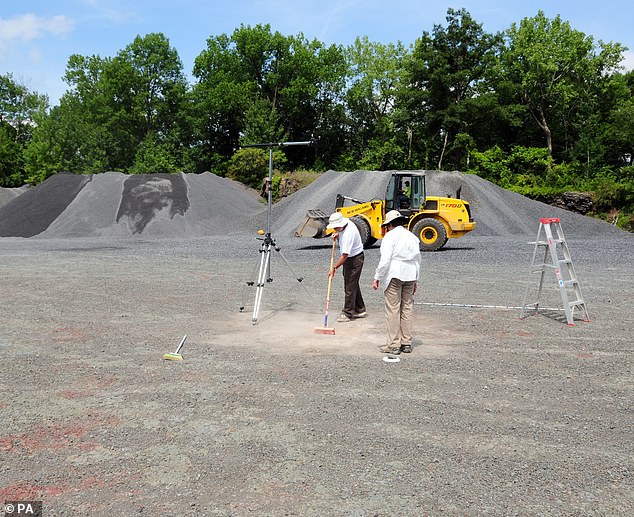
Researchers say the trees in the vast forest would have grown up to 20 meters tall, with trunks up to 1.80 meters in diameter. The research team cleared the surface of the Cairo fossil forest
The rocks in the forest are said to be 385 million years old and the land itself is about half the size of a football field.
Cardiff University reported that the forest landscape once spread along New York and Pennsylvania.
Scientists say the ancient rocks contain fossilized “woody roots” from dozens of ancient trees, marking “a turning point in Earth’s history,” according to Science.
Researchers say the trees in the vast forest would have grown up to 20 meters tall, with trunks up to 1.80 meters in diameter. The fossilized roots had horizontal radial patterns that spread from where the vertical tree trunks once existed.
The trunks are believed to be Archaeopteris, a type of tree with large woody roots and green branches, according to Current Biology.
Another type of tree known as cladoxylopsids, an extinct group of sphenopsids and ferns, was also expected to thrive in the forest. A third tree species was also discovered, but has yet to be identified.
Every tree found on the ancient land was reproduced by spores rather than seeds. Spore reproduction occurs when small cells multiply and create more plant species.
Kevin Boyce, a geoscientist at Stanford University, said these particular trees in the Cairo forest had a “major effect” on the “ancient climate.”
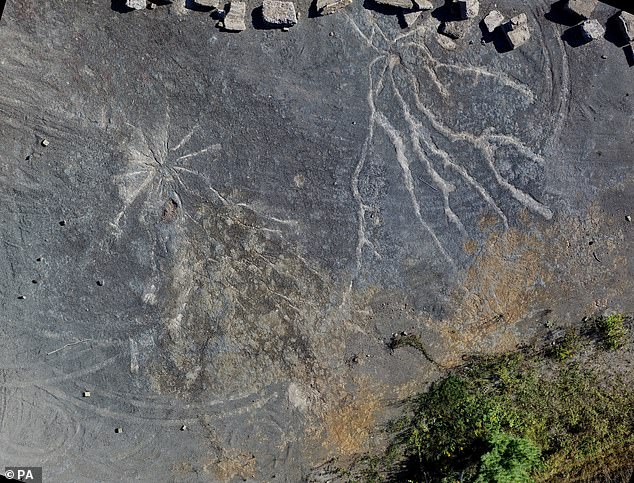
Well-preserved Archeopteris root systems (left) and possible Stigmarian Isoetalean lycopsid roots (right) are seen on the floor of the Cairo Fossil Forest
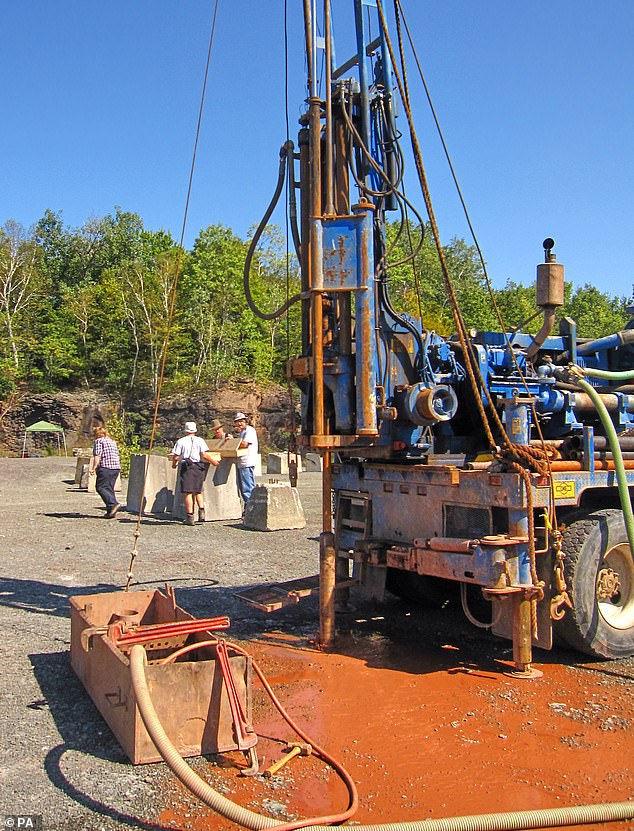
The research team carried out core drilling in 2019, when the ancient forest was discovered. Researchers believe the forest was wiped out by a flood after discovering multiple fish fossils on the surface of the quarry
This important process is known as ‘weathering’ and causes chemical reactions that then remove carbon dioxide from the atmosphere and turn it into carbon ions found in groundwater.
The groundwater then flows into the sea and is absorbed into limestone.
Researchers believe the forest was wiped out by a flood after discovering several fish fossils on the surface of the quarry.
“It is surprising to see that plants previously thought to have mutually exclusive habitat preferences are growing together in the ancient Catskill Delta,” Berry said.
He said they could have drilled into the fossil soil between the trees and examined the geochemical changes in the soil.
In 2020, New York State MP Chris Tauge presented a resolution to Cairo’s government seeking to help the city protect the sacred area in the future.
John Coyne, Cairo’s supervisor, said: ‘Things like this make you proud of what you do. To have direct ties to the community, where we have good, hard-working people, and to discover something that no one knew. It’s very rewarding and it’s the part of the job I love.’
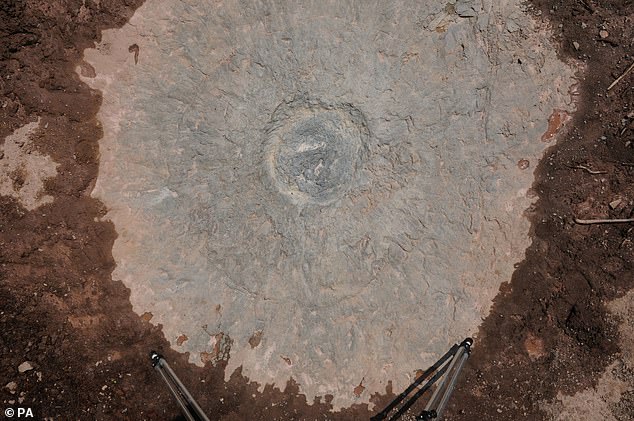
The forest was found at the bottom of a quarry in the small town of Cairo, a city in Green County, New York, about an hour’s drive from the Catskill Mountains and two hours’ drive from the George Washington Bridge in New York.
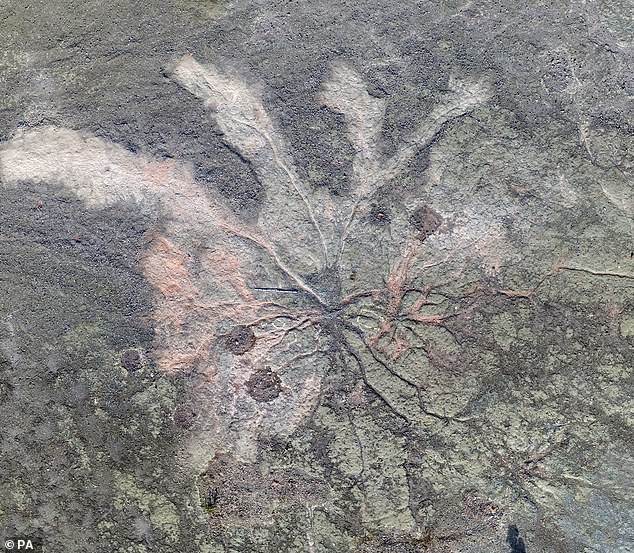
There is a view of Archaeopteris, an ancient tree with large woody roots and green branches. The Cairo Fossil Forrest is not open to the public in order to preserve the land and use it for research
‘By working together between the province, the national government and the city, it will be a win-win situation for everyone.’
Before the discovery of the Archaic Cairo Forest, a forest in Gilboa, New York, about 25 miles away, was known as the oldest.
The Gilboa Forest was discovered in the late 19th century when researchers also discovered Gilboa trees, also known as Eospermatopteris, according to the New York State Museum.
These trees are known for being one of the first plants to even exist on Earth, growing to about 30 feet tall and resembling a fern, without wood.
One tree stump saved for display was originally placed in the museum in the mid-20th century.
It was then moved to its current location at the Cultural Education Center on Madison Avenue in Albany, New York. In order to be moved properly, the specimen was broken into pieces for transport.
